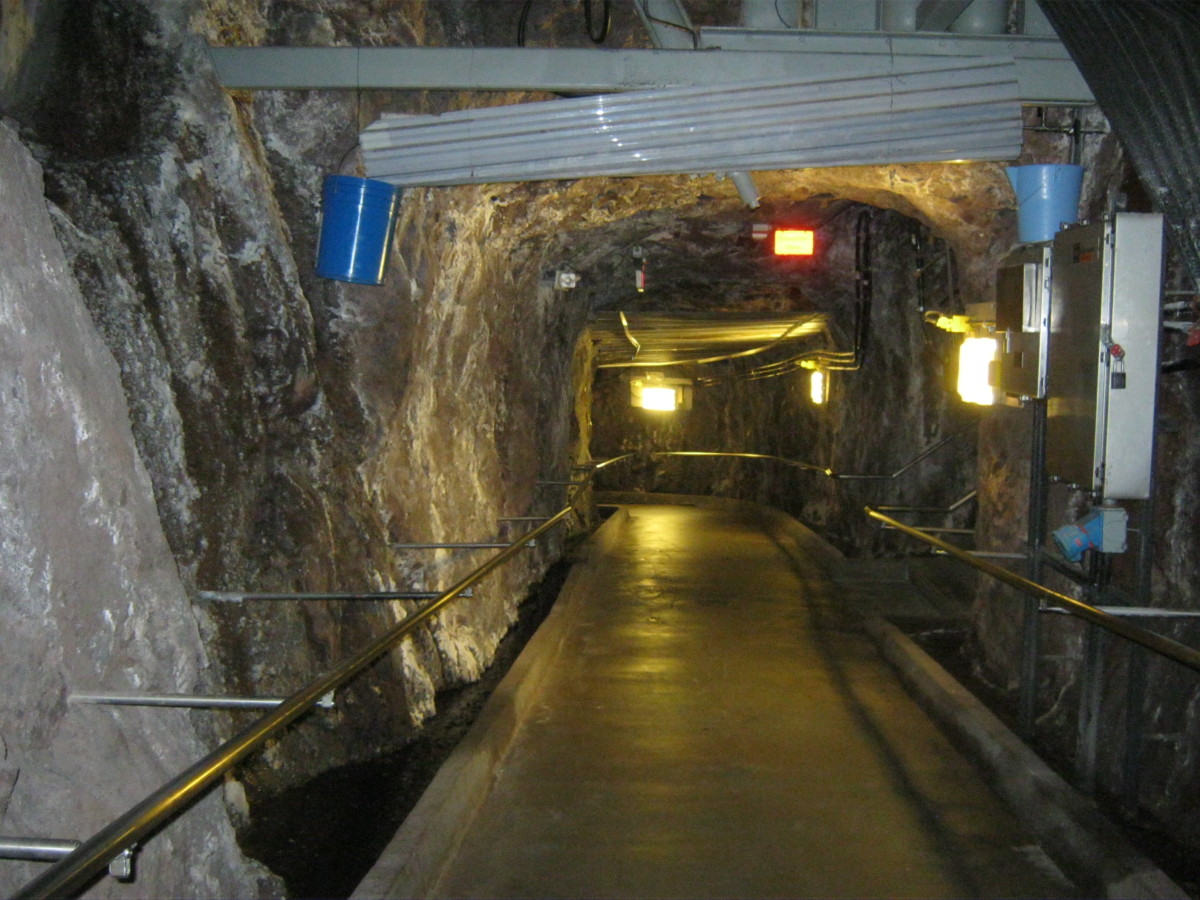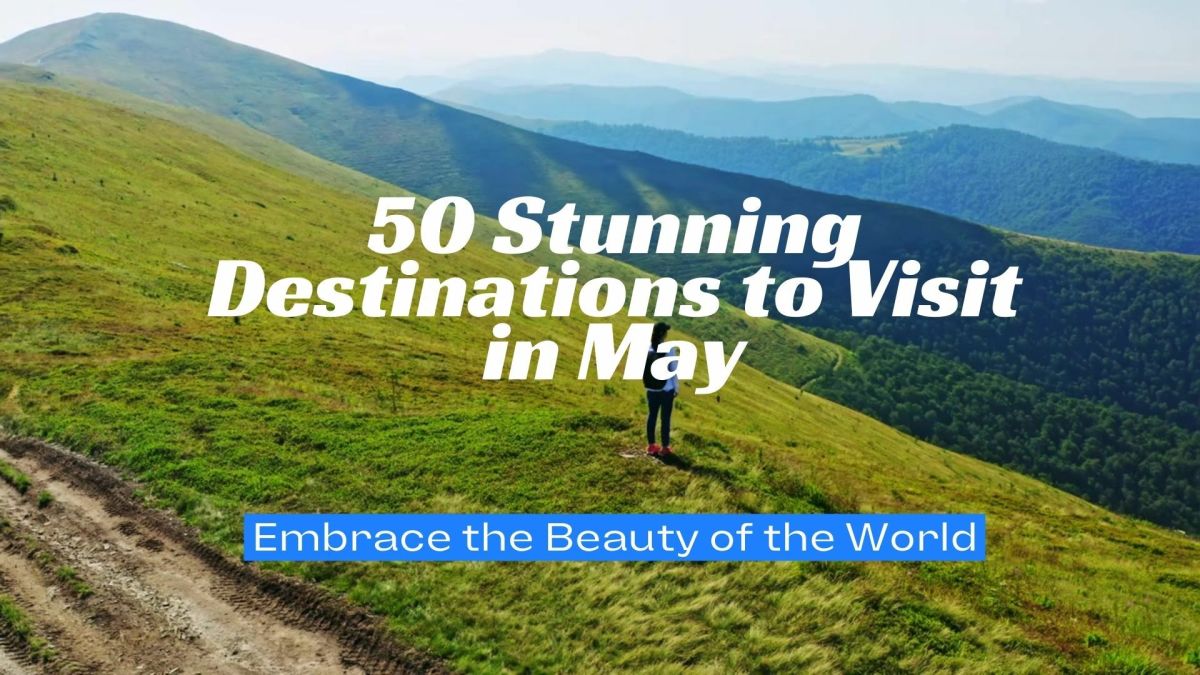Hoover Dam - History - New Bypass Bridge to the Future
Often referred to as one of the greatest man made architectural and engineering wonders of the world, the Hoover Dam located in the Black Canyon area of the Colorado River sits majestically within miles of the border of Clark County in Southern Nevada and Mohave County in Northern Arizona. This mega concrete structure is considered an undeniable testament to this nation's ingenuity, creativity, and willingness to accept any and all challenges no matter how large or difficult.
Spearheaded and commissioned by President Hoover and authorized by Congress in 1928, it was designed and built to serve a multitude of practical purposes. Most notably, it was an aggressive attempt to stave off and stem the rising tide of significant detrimental effects to our economy as a result of the devastating stock market crash and subsequent depression which began in the late 1920s and lasted approximately one decade. The duration of which was unprecedented. Along with the goal of putting people back to work it was also an efficient way to restrain and manage the Colorado River's wealth of natural resources by controlling the untamed water flow, this was accomplished by applying the largest man made spigot the country has ever seen.
Once the Hoover Dam was completed, Lake Mead was formed as a planned subsequent benefit to be used for recreational purposes and a water collection, storage, and retention point to ensure equal and efficient distribution of essential nourishment to the rapidly growing Western United States. Another by-product generated by the Dam is hydroelectric power which is produced, routed, and delivered to end users living in Nevada, California, and Arizona. The actual construction phase of the dam spanned approximately five years from 1931 to 1936 and was named after President Hoover. It was dedicated on September 10, 1935 by Franklin Roosevelt. The Hoover Dam was just one of many construction projects undertaken in this time period to give a much needed boost to the local and national economy. Thousands of dedicated and hard working Americans worked around the clock in extended shifts sometimes going without a much needed break or lunch to ensure this highly anticipated and vital piece of the infrastructure puzzle would be in place according to schedule.
The inevitable challenges and obstacles which were taken head on by the brave construction crews that worked day and night to bring this project to fruition are well documented. Sometimes we neglect to mention the tragedies that unfortunately occur with any massive project of this size and scope which were built centuries ago without the aide of modern technologies or equipment. 100+ employee fatalities were reported during the entire construction phase due to many causes including human error or the inherent everyday dangers of working on a hazardous endeavor such as this.

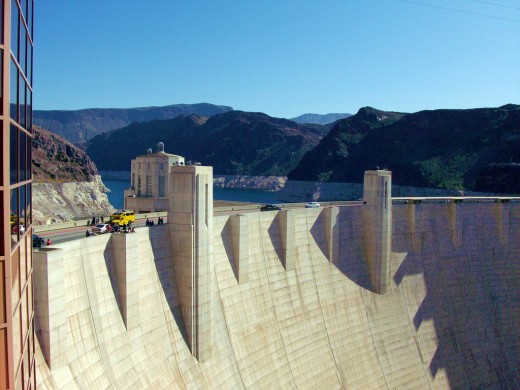

Since the completion of the project in the mid 1930s, there were many stories and claims by various media sources which circulated for decades after the Hoover Dam was finished. Hearsay tales of laborers who slipped and fell off the steep canyon walls or from the concrete structure to meet an untimely death, then subsequently buried in cement which was poured on a daily basis to create the dam's enormous foundation and partition. According to press reports, these roomers were recently dispelled by those who actually worked at the construction site, personnel who performed daily duties apparently put these myths to bed once and for all. Their rationale and credible common sense explanation was the following and I summarize from research: It was virtually impossible for anyone to be buried within the Hoover Dam's concrete structure presumably because the cement was poured and applied in several stages, just six inches to one foot at a time so it could have several hours to harden and set before the next layer was poured. According to eye witnesses and first hand reports directly from the site, this relatively thin layer of cement is apparently not of adequate depth to completely submerge a man or woman to the point of not being noticed by fellow co-workers. Furthermore, none of the relatives of the deceased ever reported a missing loved one. All were apparently accounted for.

HOOVER DAM HISTORICAL FACTS:
- Annual tourism exceeds 1 million. Main launching points to Hoover Dam are Las Vegas NV & Kingman AZ.
- During construction, payroll and employment numbers peaked at roughly 5,200 in 1934
- A total of 6 different companies were contracted to build the Hoover Dam
- Approximately 100+ deaths were reported as a result of construction
- 1 Surveyor drowned while researching the best location for the Hoover Dam
- In 1995 a new "Visitors Center" was built. ( The following year the number of annual visitors exceeded the 1 million mark for the first time, and numbers continued to increase from that point on )
<> PAVING
<> A
<> NEW
<> ROAD
<> TO
<> THE
<> FUTURE

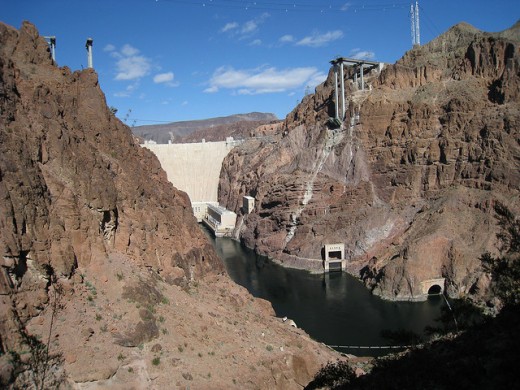
NEW BYPASS BRIDGE
Officially opened to the public in October 2010 and Appropriately named the Mike O'Callaghan/Pat Tillman Memorial Bridge ( Mike O'Callaghan, a former Governor and Pat Tillman an Iraq/Afghanistan war veteran who was killed by friendly fire in the line of duty ). The New Bypass Bridge is located adjacent to the Hoover Dam. An impressive arch rising more than 700 feet above the Colorado River, this new connecting highway and monument is considered a mega achievement even for today's standards. It expands interstate vehicle capacity by an additional four lanes equaling a combined total of six which relieves traffic congestion and significantly reduces commuter and commercial travel times between destinations. One more major step toward providing a concrete road to prosperity for the entire Tri-State Region.
During the 1940s right up to the 1980s, this marvel of American ingenuity and engineering called the Hoover Dam, which not only served as an irrigation conduit and water distribution hub, but as the only two lane crossing point from one side of the Colorado River to the other, was more than sufficient to accommodate the consistently increasing flow of commuter, tourism, and commercial traffic that traveled between the Las Vegas and Mohave County areas. However, due to the highly desirable natural geographic location of these two counties, they naturally evolved into a logical winter escape and permanent relocation destination for thousands of Americans and people from all over the world.
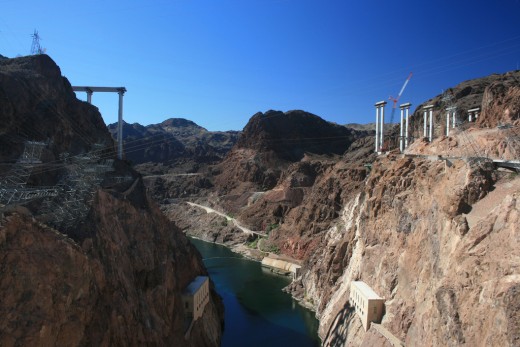
The abundant sunshine and mild year round temperatures combined with growing employment opportunities including interstate commerce via trucking and all secondary or tertiary support positions that go with it, set the stage for sustained residential and economic growth opportunities. The trend has continued to this day as many had anticipated and it's expected to accelerate in the coming years and decades as a result of a diverse array of companies expanding operations into the region.
The idea for an additional four lane artery to augment roadway coverage and accommodate population and commerce expansion was conceived and tabled for discussion in 2000 after many years of consideration regarding additional infrastructure improvements necessary to facilitate a rapidly growing and developing region such as the Las Vegas and Mohave County area. A realistic and comprehensive blueprint was ultimately drafted resulting in a new four lane artery which should hopefully mitigate and alleviate traffic congestion for decades to come. While the Clark County Nevada and Mohave County Arizona Regions are separated only by the flowing Colorado River and a state and county borderline, they have many things in common including a population base which consists primarily of people who have relocated from other parts of the country such as the Northeast or Midwest, resulting in a steady, seamless integration of cultural elements and organic economic stimulus. Also, the respective economies are closely intertwined due to their relatively close proximity.
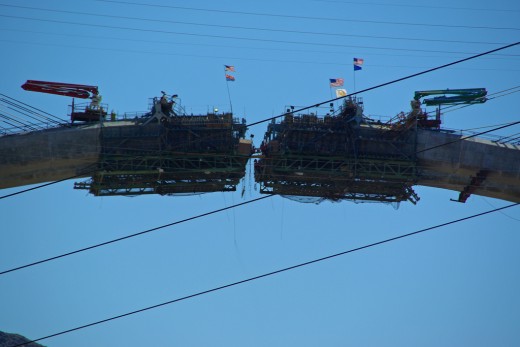
The distance between Las Vegas and Kingman is a modest 90 miles of essentially undeveloped open space which most agree will not remain that way for long. Recent reports of a shortage of build-able land in and around the Las Vegas Region along with other pertinent factors lends support to the theory that we are at the beginning stages of major investment capitol trickling southward into the Mohave County Region. Several Domestic and international companies have already invested thousands of research hours and billions of dollars on land purchase which is currently in the development stages or to be worked and converted in the near future. A natural migration from the Southern Nevada area into the Northern Arizona area has been an ongoing process for decades and continues to accelerate. The recent grand opening of the new bypass bridge is further evidence of a major commitment to foster continued cultural and economic integration which should benefit the entire region as a whole in the coming years.

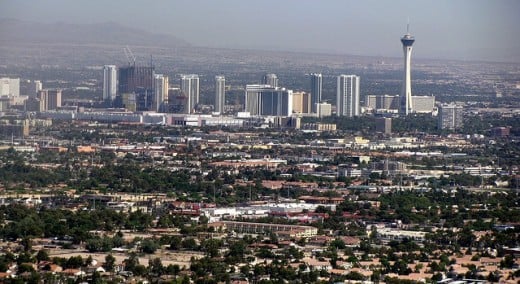
BYPASS BRIDGE FOSTERS CONTINUED GROWTH IN TOURISM & ECONOMIC PROSPERITY
Since its construction decades ago, there have been countless private entities from around the world who have already invested in this fertile region that surrounds the Hoover Dam, and a limitless flow of well documented reports indicating several other companies who plan on pouring additional working capitol into the area sometime in the near future. Needless to say, the New Bypass Bridge reinforces this invitation to all who are planning on creating their own unique contribution to Mohave County.
One of the main contributors of good will and supporters of smart development which has resulted in widespread property enhancement and enrichment in the past, is the Hualapai Nation. Throughout the years they have been instrumental in encouraging and fostering development of tourist destinations in the Mohave County area which in return, have generated a steady stream of revenue for all residents and investors. They are indeed an example of the more prominent indigenous ambassadors who have been a significant positive driving force of the local economy. Anticipating the tremendous growth potential and integration prospects for the two neighboring counties, it seems as if the Hualapai foresaw the evolution and ultimate commingling of Southern Nevada & Northern Arizona, hence the strategic planning and road map for the future.
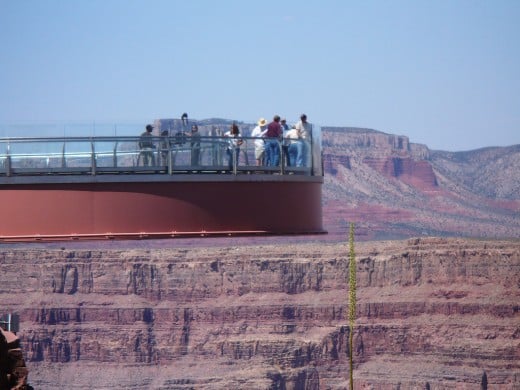
The Hualapai have always been generous in regard to development of prudent projects such as tourist spots, planned residential communities, and earth healing Green Energy Ventures like Solar & Wind. Reaching working agreements that grant land access to builders who envision these types of developments along with essential infrastructure upgrades which always result in a better quality of life for all residents. For years it appears as if the Native Americans in Arizona have eagerly awaited the ultimate natural progression from not only Nevada but all over the world, hence the ongoing planning and construction of a multitude of projects designed to benefit everyone.
The Hualapai benefit by generating a steady income stream as visitors patronize the attractions, which in turn can be used for the greater good of the community and adjacent neighbors. The cities and counties benefit from property and sales tax dollars collected, which once again can be funneled right back into the local and state economies. And each individual resident benefits from job creation aspects, City & County Improvement Projects, and an overall increase in property value. The cultural and economic aspects of Southern Nevada and Northern Arizona have blended together seamlessly, and the only physical barrier that separated the geographical makeup was the Colorado River and the canyon which encompasses it, a gap which has been long since bridged by the original Hoover Dam and now augmented even further by the new four lane Bypass Bridge.
There a several tourist destinations already located here and several others in the planning stages, but two of the most exciting and imaginative examples of Native American entrepreneurship would be the Avi Hotel & Resort located just south of the main "Strip" in Laughlin Nevada and the relatively new "Skywalk", which offers visitors an exhilarating and unique mile high perspective of the Grand Canyon and Colorado River. A refreshing and exciting way to absorb the surrounding beauty. Perched upon the apex of this natural wonder overlooking a large eagle shaped rock formation etched into the canyon wall by weather elements, sits a horseshoe shaped plexiglas walkway anchored by a larger building that allows it to extend 70 feet outward over the upper surface rim. This engineering marvel gives you the surreal sensation of walking on air as you look down toward the floor of the canyon roughly one mile below. The transparent floor structure is designed to give the visitor an unimpeded, unobstructed, and unprecedented view and experience of a lifetime.
If you plan on visiting the Grand Canyon "Skywalk", there are two separate admission fees, one to access the lands and another to enter the "Skywalk". It's not inexpensive, but if you're interested in a once in a experience, it's well worth the expense.
- The Avi Hotel & Resort and "The Skywalk" are just two examples of successful Native American ventures located in both Clark and Mohave Counties which were designed and developed in conjunction with private enterprise. According to credible sources, this blossoming region has only just begun to reach full potential -

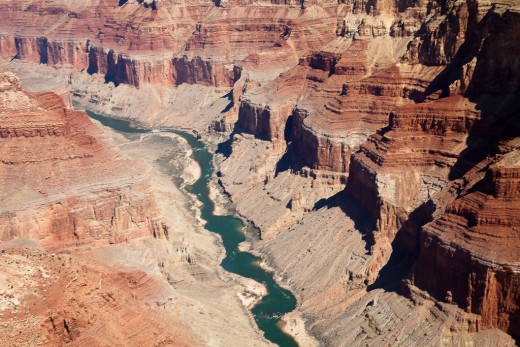

Photo Links:
- All sizes | colorado river | Flickr - Photo Sharing!
- All sizes | Skywalk 02 | Flickr - Photo Sharing!
- All sizes | aerial view of las vegas | Flickr - Photo Sharing!
- All sizes | Hoover Bypass bridge | Flickr - Photo Sharing!
- All sizes | Construction of Hoover Dam bypass | Flickr - Photo Sharing!
- All sizes | IMG_0086.JPG | Flickr - Photo Sharing!
- All sizes | Hoover Dam | Flickr - Photo Sharing!
- Creative Commons Attribution 2.0 Generic

